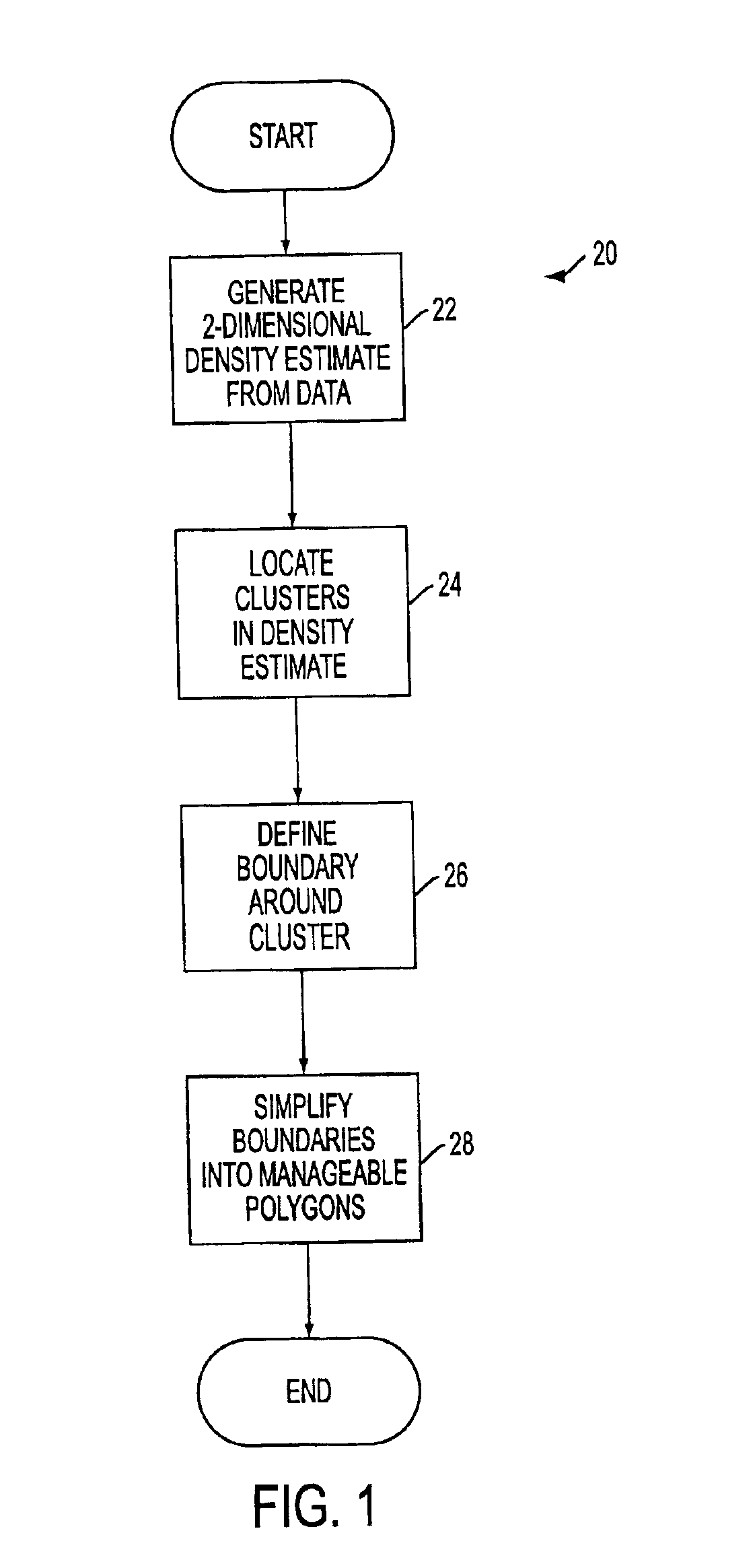System for identifying clusters in scatter plots using smoothed polygons with optimal boundaries
a technology of optimal boundaries and scatter plots, applied in the field of optimal boundaries for cluster identification in scatter plots, can solve the problems of difficult to distinguish between cells which fall into regions of apparent overlap, contribute inaccuracy to population counts and percentages being reported, and their detection and classification are both difficult and important, so as to facilitate batch processing and facilitate the processing of other related data sets.
- Summary
- Abstract
- Description
- Claims
- Application Information
AI Technical Summary
Benefits of technology
Problems solved by technology
Method used
Image
Examples
Embodiment Construction
[0033]In accordance with an embodiment of the present invention, a cluster finder algorithm 20 is provided which can be used with event data such as scatter plots of data obtained via flow cytometry. The cluster finder algorithm 20 is illustrated in FIG. 1 and will be described in further detail below. It is to be understood that the cluster finder algorithm 20 can be used with essentially any application employing a two-dimensional data set.
[0034]The cluster finder algorithm 20 is preferably implemented in software code that is executed by a programmable digital computer (FIG. 12). The processing device implementing the cluster finder algorithm 20 can receive the data to be processed via an electronic file comprising a table having two columns of numbers corresponding to points (x,y) in the scatter plot, for example. An exemplary scatter plot is shown in FIG. 2. The exemplary data provided in FIG. 2 will be processed in accordance with the present invention and described below in c...
PUM
| Property | Measurement | Unit |
|---|---|---|
| wavelength of emission | aaaaa | aaaaa |
| density | aaaaa | aaaaa |
| area | aaaaa | aaaaa |
Abstract
Description
Claims
Application Information
 Login to View More
Login to View More - R&D
- Intellectual Property
- Life Sciences
- Materials
- Tech Scout
- Unparalleled Data Quality
- Higher Quality Content
- 60% Fewer Hallucinations
Browse by: Latest US Patents, China's latest patents, Technical Efficacy Thesaurus, Application Domain, Technology Topic, Popular Technical Reports.
© 2025 PatSnap. All rights reserved.Legal|Privacy policy|Modern Slavery Act Transparency Statement|Sitemap|About US| Contact US: help@patsnap.com



